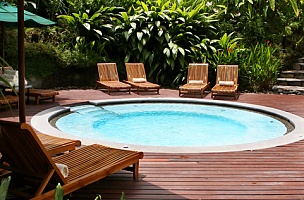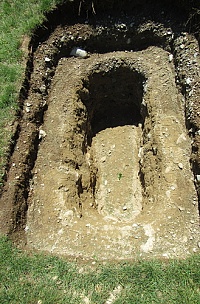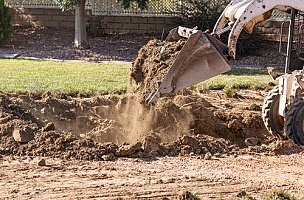Are you considering removing a hot tub from your property?
A hot tub can last for many years if it is well cared for and made using high-quality materials, but all hot tubs will eventually reach the end of their useful lifespan. For some people, safety concerns prompt the desire to remove the hot tub, while others do not get enough use out of it and would like to avoid the ongoing maintenance costs. Some homeowners never wanted a hot tub in the first place but purchased a home that already had one and now wish to get rid of it.

Whatever the reason, hot tub removal is a fairly straightforward process that can free up space in your yard for another use. If your hot tub is installed in the ground, however, the process is a lot more complicated than removing an above-ground hot tub and will therefore cost more money.
This is because its structure is built into the ground, and in many cases, it is integrated into an inground concrete pool. In fact, this type of hot tub can be thought of as a miniature pool with water jets, and its removal is also similar to that of an inground pool but on a smaller scale.
Factors That Influence The Cost Of Removal
Here is a look at some of the factors involved in removing an inground hot tub and how much you might expect to pay for it.
The Work Involved In Inground Hot Tub Removal
The most common way to remove an inground hot tub is by breaking down and removing its materials and then conducting a backfill. First, the tub will be drained and the plumbing line and electrical fixtures will be disconnected. Then, it will be broken down and the materials will be hauled away. Finally, it will be filled with dirt and then covered with compacted topsoil.
The Inground Hot Tub Cost Range
The average cost of removing an inground swimming pool, according to HomeAdvisor, ranges from $3,000 to $10,000. This price range applies to an easily accessible, small pool that measures roughly 10 by 20 feet, so homeowners can expect to pay closer to the lower end of the range here for removing an inground hot tub.
Many contractors will charge for inground hot tub removal on a per-project basis, but if the contractor you have in mind is using an hourly fee, it is important to ask in advance how long the work is expected to take to assist in budget planning.
It is also important to keep in mind that many municipalities require homeowners to work with an engineer in the filling stage, which can add onto the inground hot tub removal cost by a few hundred dollars. This is often worth it for larger inground hot tubs, especially if they will be removed along with a pool, as it means you will be permitted to build another structure on the area and won’t have to disclose to future prospective buyers that a pool and/or hot tub once existed there.
Here is a look at some of the factors that will influence the overall inground hot tub removal cost.
The Material Of The Hot Tub
Inground hot tubs are typically made of concrete or gunite, which can be expensive to remove because of their weight and the need to break them down before being moved off-site.
How Much Fill Dirt Is Required

It is also important to consider the fill dirt needed to fill in the space where the in ground hot tub was installed in the ground. This will depend mainly on its size and depth. Fill dirt tends to cost between $5 and $15 per cubic yard, but some homeowners opt for a mix of dirt and stone to account for the possibility of the land settling over time. With inground hot tubs, this is not as much of a concern as it would be with a larger swimming pool, however.
The Necessary Permits That Must Be Acquired
Depending on where you live, it may be necessary to obtain a permit or inspection prior to or after removing an inground hot tub. These permits may cost between $50 and $250, but it is important to check with your municipality as not all areas will require this. A contractor will typically be able to pull these permits on your behalf, but this is something that you should specify.
The Area Surrounding The Inground Hot Tub
The area surrounding your inground hot tub is an important consideration as this can influence the complexity of the job. For example, if it is integrated into your pool and you wish to keep the pool intact, it is going to require a great deal of care to avoid damaging the pool and will therefore require more labor than removing a standalone inground hot tub.
Likewise, if the inground hot tub has a deck or patio built around it, you will need to consider the costs associated with breaking up the material of the patio or deck. If you intend to keep the same patio or deck after removing the hot tub, any areas that were broken up during the job will also need to be repaired, and the area once occupied by the tub will need to be covered to match it.
Access To The Area

If it is challenging for the contractor to get the equipment needed for the job into the area of the yard where the inground hot tub is located due to the layout of the land or fencing, this could also cause the price of the project to rise.
Consider The Space’s Future Use
You will also need to factor in the area’s future use when determining how to have the space filled. For example, if you intend to use it as a play area for kids or to create a sandbox, it will require a different type of fill than if you plan to turn it into a garden bed. This will also impact the overall price of the job.
Get In Touch With The Northern Virginia Pool Removal Professionals
If you would like to learn more about the cost of having your inground hot tub removed, reach out to the pool removal team at Dirt Connections. We offer full-service removal and backfilling services to ensure you end up with the yard of your dreams.
Summary

Dirt Connections was started with one goal in mind: providing quality residential and commercial construction services to clients on time and on budget. Reach out for more information on how we can support your next project.
For your convenience our estimates are free and by appointment. Call 703-940-9949 for a free estimate today!









































